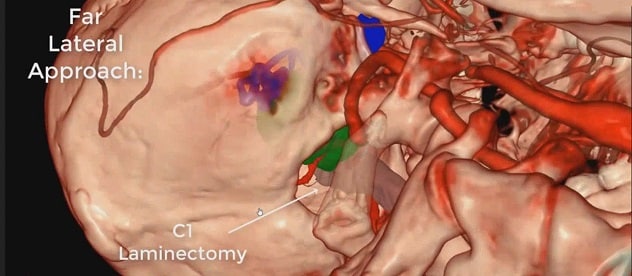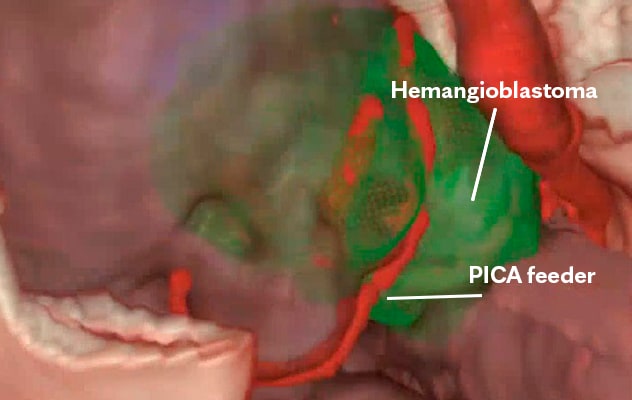March 26, 2024
Mayo Clinic's use of augmented reality helps enhance the accuracy of brain tumor surgery. "Merging the avatar with the real patient allows us to create a surgical approach designed for each person's needs. That can result in better outcomes," says Bernard R. Bendok, M.D., chair of Neurologic Surgery at Mayo Clinic in Phoenix/Scottsdale, Arizona.
Dr. Bendok leads Mayo Clinic's Neurosurgery Simulation and Innovations Laboratory, which uses advanced technologies to create patient-specific simulations of surgeries. The simulations are then used for surgical planning and intraoperative guidance, as well as for educating students and explaining upcoming procedures to patients.
"We can engage patients by showing them the digital version of their problem and how we're going to fix it. Then we can integrate that digital model into the intraoperative navigation," Dr. Bendok says.
"Surgery is evolving," he continues. "Augmented reality gives the surgeon more intelligence. You're seeing through the wall, so to speak."
Avoiding catastrophic hemorrhage
 Planning the approach
Planning the approach
Augmented reality-generated image shows a patient's hemangioblastoma (green), posterior inferior cerebellar artery feeding the tumor (red) and the abnormal draining vein (blue), with notes highlighting the surgical plan.
 Superimposed images
Superimposed images
During surgery, the augmented reality image is superimposed on the surgical field.
Augmented reality can help neurosurgeons overcome the challenges of resecting hypervascular tumors. Dr. Bendok recalls the case of a 51-year-old woman with a highly vascular hemangioblastoma.
"We wanted to go into the OR knowing exactly where in a 3D space the feeders were so we didn't have catastrophic, life-threatening hemorrhage," Dr. Bendok says. Augmented reality imaging allowed the surgical team to occlude the feeders immediately after opening the skull and then successfully remove the lesion.
Augmented reality also can accelerate young doctors' training. Simulations allow trainees to practice repeatedly and, with supervision, to successfully perform complex procedures. "We're shifting the learning curve to the left," Dr. Bendok says.
Longtime members of the surgical team also benefit. Augmented reality helps them engage with a surgical plan before and during the procedure. "Historically, only the surgeon could see through a microscope what was happening. But now, the whole OR can see, based on the digital display," Dr. Bendok says.
Mayo Clinic's considered use of augmented reality reflects a commitment to constant improvement of patient care. "Sometimes, tweaking isn't enough. To get a quantum leap, we have to take advantage of the digital revolution," Dr. Bendok says. "But it takes Mayo Clinic physicians to translate these technological advances into something that helps patients — that saves lives."
For more information
Neurosurgery Simulation and Innovations Laboratory. Mayo Clinic.
Refer a patient to Mayo Clinic.